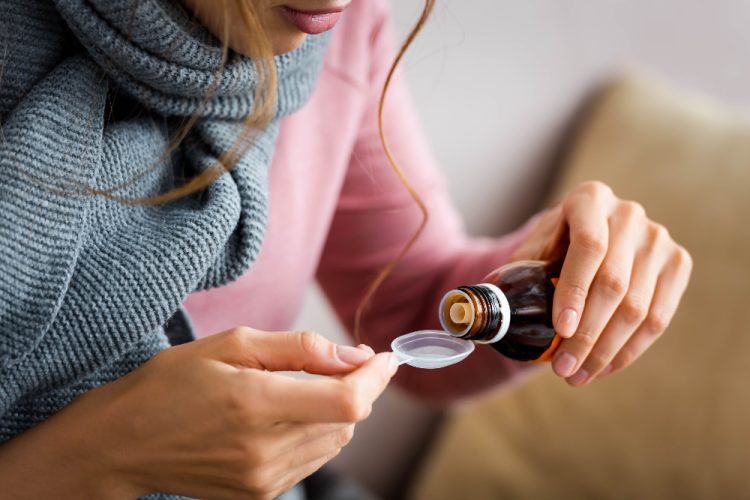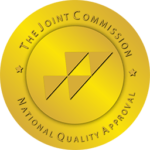The term ‘Triple C’s’ refers to a seemingly innocuous set of over-the-counter medications: Coricidin, Cough, and Cold. These medications commonly found in your medicine cabinet, while designed to treat common cold and cough symptoms, hide a darker side when misused. The public often perceives these as harmless due to their over-the-counter status, but the reality is far more concerning.
The potential for abuse and addiction, and the resultant health risks, are significant and often overlooked. This article aims to shed light on the dangers of the Triple C’s, providing an in-depth understanding of what they are, how they are abused, and the risks associated with their misuse.
What Are the Triple C’s?
The Triple C’s are a brand of medication that primarily treats cough and cold symptoms. Their main ingredient, dextromethorphan (DXM), is effective as a cough suppressant when used as directed. However, when misused, DXM can produce psychoactive effects.
The accessibility of these medications, available in forms ranging from syrups to pills, makes them particularly appealing to individuals seeking a readily available means to experience a high.
This accessibility has contributed to a rise in their misuse, especially among teenagers and young adults, who often underestimate the risks associated with these drugs had misused cough or cold medications for their psychoactive effects.
Abusing the Triple C’s
Abuse of the Triple C’s involves consuming these medications in quantities far beyond the recommended therapeutic doses to achieve a psychoactive effect. This misuse is alarmingly prevalent, especially among teenagers and young adults, who may view these drugs as a safe alternative to illegal substances. In fact, in 2008, the Substance Abuse and Mental Health Services Administration (SAMHSA) disclosed that around 3 million adolescents and young adults, typically ranging in age from 12 to 25, had misused cough or cold medications for their psychoactive effects.
The societal impact of this misuse is profound, with many failing to recognize the severity due to misconceptions about the safety of over-the-counter drugs. Patterns of abuse vary but commonly involve repeated use to maintain the high and escape reality, leading to a cycle of abuse and dependency. Understanding these patterns and the demographics most at risk is crucial in addressing this growing concern.
Are the Triple C’s Dangerous?
Yes, the Triple C’s can be extremely dangerous, especially when misused. Taking these medications in doses higher than recommended can lead to severe health complications, such as respiratory distress, irregular heart rhythms, and in extreme cases, fatal outcomes. The psychological dangers are equally alarming, with users potentially experiencing intense hallucinations, severe disorientation, and psychosis.
Moreover, the risk increases significantly when these drugs are mixed with other substances, leading to unpredictable and dangerous reactions. The societal perception that over-the-counter drugs are safe under all circumstances is a dangerous misconception that contributes to their misuse.
Effects of the Triple C’s
The effects of abusing Triple C’s range from immediate to long-lasting impacts. In the short term, users may experience euphoria, altered sensory perceptions, and hallucinations, which might seem appealing but are indicators of the drug’s harmful impact on the brain.
Long-term abuse can lead to chronic health issues, including liver damage, permanent brain damage, and severe psychological disorders like depression and anxiety. The development of tolerance is another significant concern, as it leads users to consume increasingly higher doses, thereby escalating the risk of an overdose and long-term harm.
Addiction to the Triple C’s
Addiction to Triple C’s is a serious concern and manifests both physically and psychologically. Physical dependency develops when the body gets accustomed to the drug’s presence, leading to withdrawal symptoms upon cessation. Psychologically, users often develop a compulsive need for the drug, continuing its use despite being aware of its harmful effects.
This addiction cycle is characterized by an overwhelming desire to use the drug, difficulties in controlling its use and persisting in its use despite knowing the risks. Breaking this cycle requires a comprehensive approach involving medical, psychological, and social support.
Withdrawal Symptoms of Triple C’s
Withdrawal from Triple C’s can be a difficult and painful process. Physically, individuals may experience symptoms like intense headaches, nausea, sweating, and extreme fatigue. Psychologically, symptoms can range from severe anxiety and depression to intense cravings for the drug. These symptoms can be so severe that they interfere with daily life activities, emphasizing the need for supervised medical intervention and support during the withdrawal phase.
Treatment Programs for Overcoming Addiction to the Triple C’s
Overcoming addiction to the Triple C’s requires a structured approach, often involving multiple levels of care. The journey to recovery from drug addiction typically includes detoxification, inpatient rehabilitation, and outpatient rehabilitation, each different treatment program playing a crucial role in the healing process.
Detoxification (Detox)
Detox is the first and one of the most critical steps in addiction recovery and treating addiction to the Triple C’s and substance abuse. It involves medically supervised withdrawal from the drug, ensuring that the process is safe and as comfortable as possible. During detox, healthcare professionals monitor patients to manage withdrawal symptoms, which can range from mild to severe.
Medical supervision is essential because withdrawal can sometimes lead to serious health complications. Detox also prepares individuals for the next stages of treatment, focusing on physical stabilization and readiness for therapeutic interventions.
Inpatient Rehabilitation
After detox, many individuals transition to inpatient rehabilitation, a more intensive treatment option. Inpatient rehab provides a structured environment where individuals can focus entirely on their recovery, away from the distractions and triggers of their daily environment.
This level of care typically involves a combination of therapy sessions, including individual counseling, group therapy, and sometimes family therapy. These sessions are designed to address the underlying causes of addiction, equip individuals with coping strategies, and facilitate holistic healing. Inpatient programs vary in length, often ranging from 30 to 90 days, depending on individual needs.
Outpatient Rehabilitation
Outpatient rehab is a less intensive form of treatment compared to inpatient rehab. It allows individuals to live at home and maintain their daily responsibilities, such as work or school, while attending treatment sessions. Outpatient programs offer flexibility and are often used as a step-down from inpatient treatment or as an entry point for those with less severe addictions.
These programs still provide comprehensive therapy and support, including individual counseling, group sessions, and relapse prevention education. The frequency and intensity of the sessions can vary, providing a tailored approach to fit the specific needs and schedules of individuals in recovery.
Get Professional Help
the Triple C’s – Coricidin, Cough, and Cold medications – while effective for treating cough and cold symptoms, present significant risks when misused. The dangers, ranging from severe health complications to addiction, are a growing concern, particularly among younger demographics. Understanding the risks, recognizing the signs of abuse and addiction, and knowing how to seek help are crucial steps in addressing this issue.
If you or a loved one are struggling with an addiction to one of the Triple C’s, get in touch with True Self Recovery. Our Drug and Alcohol Rehab center is dedicated to providing individuals with a safe and supportive environment to recover from addiction.
FAQs
Are there safer alternatives to using Triple C's for cough and cold?
Yes, there are safer alternatives for treating cough and cold symptoms. It is always advisable to consult with healthcare professionals who can recommend appropriate medications based on individual health needs. These alternatives might include other over-the-counter medications with a lower risk of misuse or prescription drugs that are closely monitored by a healthcare provider. Additionally, non-medication approaches like steam inhalation, warm fluids, and rest can be effective for mild symptoms.
What are the side effects of the drug Coricidin?
Side effects of this common cold medication include dizziness, drowsiness, nausea, and vomiting. When taken in high doses, as seen in cases of abuse, the side effects can be more severe and include hallucinations, high blood pressure, rapid heart rate, and confusion. In extreme cases, misuse can lead to serious complications like liver damage, respiratory distress, and in rare instances, life-threatening conditions.
Is dextromethorphan a narcotic?
Dextromethorphan (DXM), a key ingredient in many different kinds of cough medicine, cough syrup, and suppressants like Coricidin, is not classified as a narcotic. It is a cough suppressant that works on certain signals in the brain to reduce the urge to cough. However, despite not being a narcotic, DXM has psychoactive properties when taken in large doses, which can lead to a state of euphoria and altered perception, similar to that produced by some narcotics.
Can I mix dextromethorphan with alcohol?
Combining DXM with alcohol is highly discouraged, as it can significantly increase the risk of dangerous side effects and potentially life-threatening complications. This mixture can lead to heightened impairment, increased risk of respiratory distress, heightened drowsiness, and can even induce a toxic state in the body. Both substances depress the central nervous system and, when taken together, can amplify each other’s effects unpredictably.



